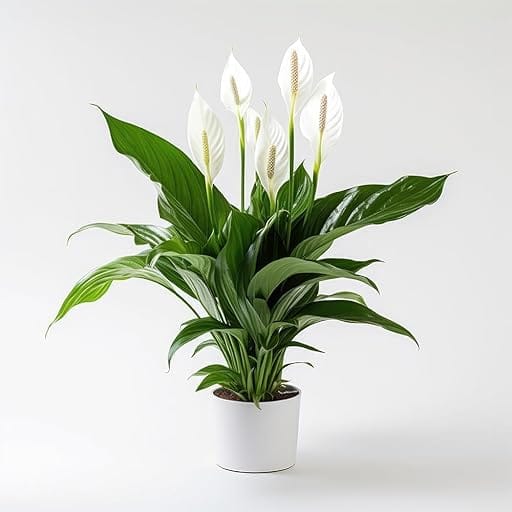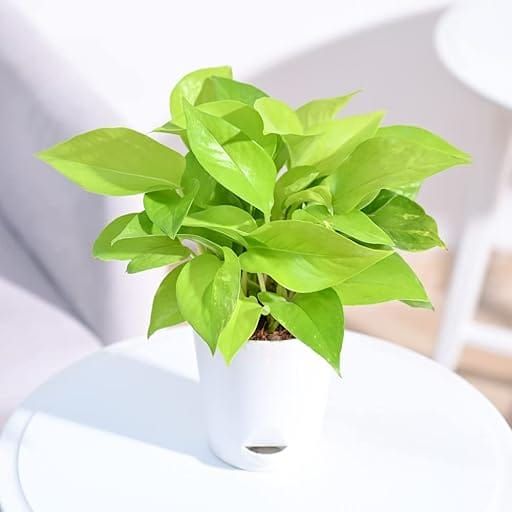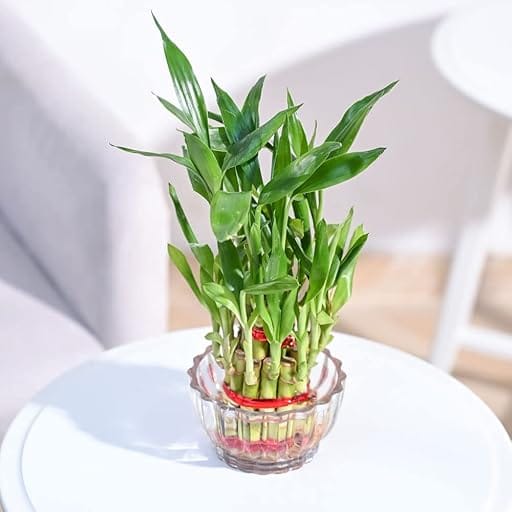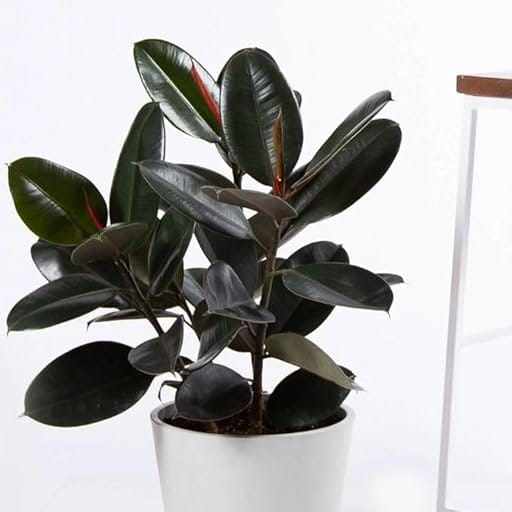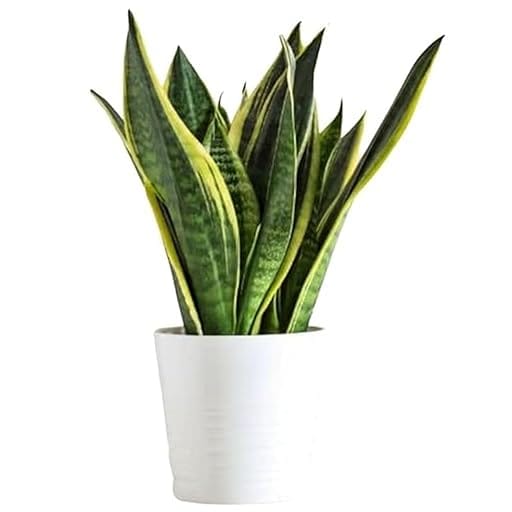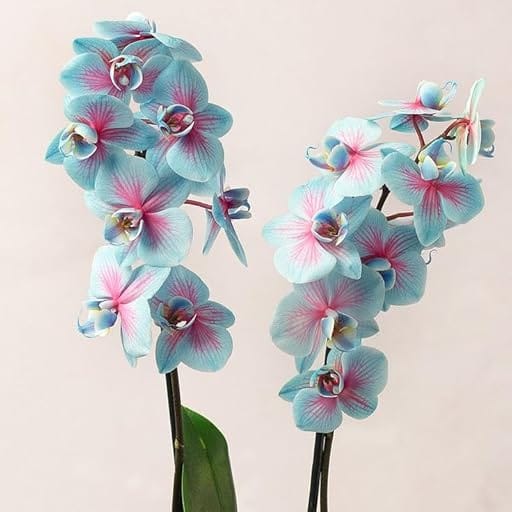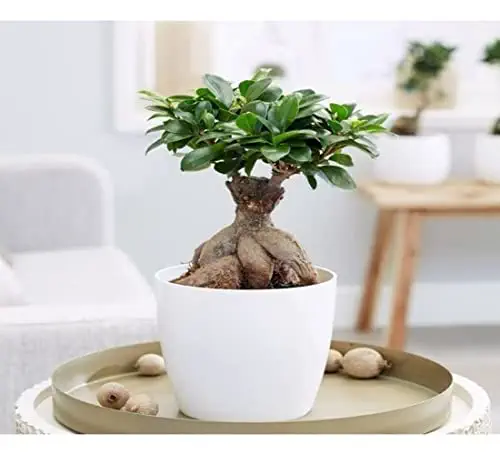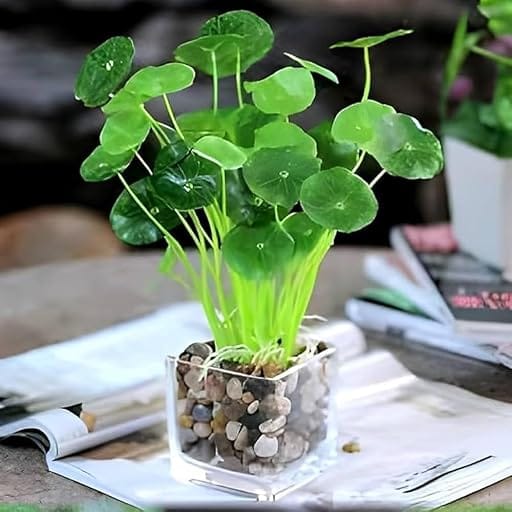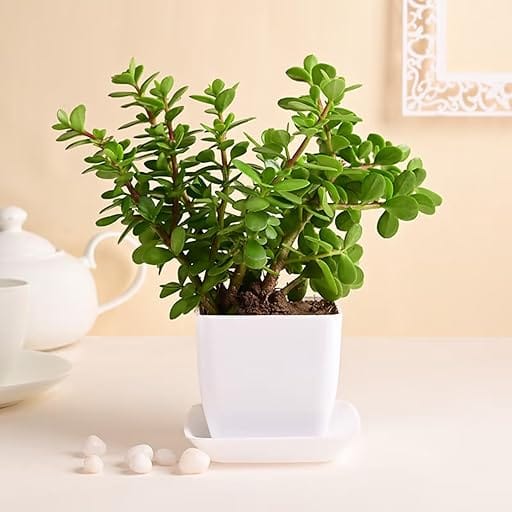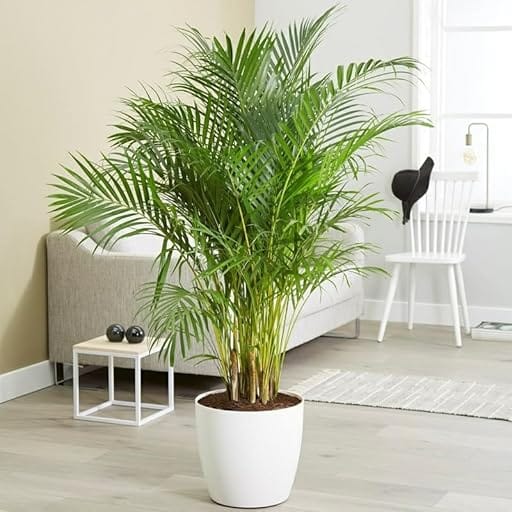10 Best Indoor Plants to Attract Good Fortune and Positive Vibes
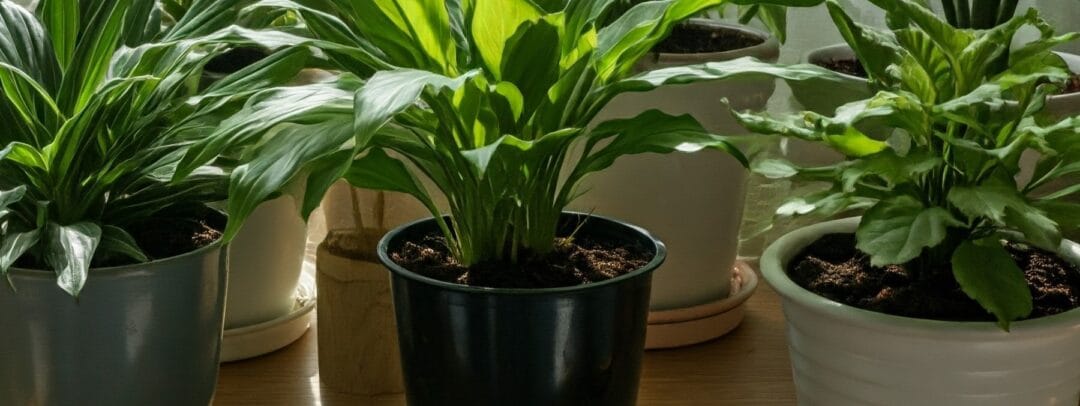
Discover these 10 Best Indoor Plants to Attract Good Fortune and Positive Vibes at your home
The Peace Lily
scientifically known as Spathiphyllum, is a popular houseplant renowned for its air-purifying qualities and elegant white blooms, it is believed to promote tranquility and harmony
Key features:
- Air-purifying: Effectively removes toxins like formaldehyde, benzene, and trichloroethylene from the air.
- Low-light tolerance: Thrives in low-light conditions, making it ideal for indoor spaces.
- Attractive foliage: Features glossy, dark green leaves that add a touch of elegance to any room.
- Beauiful blooms: Produces white, spathe-shaped flowers that resemble lilies.
Care tips:
- Watering: Water moderately, allowing the soil to dry slightly between waterings. Overwatering can lead to root rot.
- Light: Prefers bright, indirect light but can tolerate low-light conditions.
- Humidity: Thrives in humid environments. Mist the leaves regularly or use a humidifier.
- Temperature: Prefers temperatures between 65-75°F (18-24°C).
- Fertilizing: Fertilize with a balanced liquid fertilizer every 2-3 months during the growing season.
Additional benefits:
- Reduces stress: The presence of a Peace Lily can help reduce stress and anxiety.
- Improves air quality: By removing toxins from the air, it can improve respiratory health.
- Enhances mood: Its beautiful blooms and lush foliage can uplift your mood and create a calming atmosphere.
The Money Plant
also known as Golden Pothos (Epipremnum aureum), is a popular houseplant believed to attract wealth and prosperity. It’s known for its heart-shaped leaves, which can be solid green or variegated with yellow or white.
Key features:
- Air-purifying: Effectively removes toxins like formaldehyde, benzene, and xylene from the air.
- Low-light tolerance: Thrives in low-light conditions, making it ideal for indoor spaces.
- Easy to care for: Requires minimal maintenance and is tolerant of neglect
- Versatile: Can be grown as a trailing vine, climbing plant, or in hanging baskets.
Care tips:
- Watering: Water moderately, allowing the soil to dry slightly between waterings. Overwatering can lead to root rot.
- Light: Prefers bright, indirect light but can tolerate low-light conditions.
- Temperature: Prefers temperatures between 65-75°F (18-24°C).
- Fertilizing: Fertilize with a balanced liquid fertilizer every 2-3 months during the growing season.
Additional benefits:
- Feng Shui: In Feng Shui, the Money Plant is believed to attract wealth and prosperity when placed in the southeast corner of the home.
- Improves air quality: By removing toxins from the air, it can improve respiratory health.
- Enhances mood: Its lush foliage can uplift your mood and create a calming atmosphere.
Lucky Bamboo
scientifically known as Dracaena sanderiana, is a popular houseplant often associated with good luck and prosperity in Feng Shui. It’s known for its slender, bamboo-like stalks that can be grown in water or soil.
Key features:
- Air-purifying: Effectively removes toxins like formaldehyde, benzene, and trichloroethylene from the air.
- Low-maintenance: Requires minimal care and can thrive in low-light conditions.
- Symbolism: The number of stalks in a Lucky Bamboo arrangement can represent different meanings, such as wealth, health, and love.
- Versatile: Can be grown in water or soil and can be braided or arranged in various shapes.
Care tips:
- Water: Change the water every 1-2 weeks and add a few drops of liquid fertilizer.
- Light: Prefers bright, indirect light but can tolerate low-light conditions.
- Temperature: Prefers temperatures between 65-75°F (18-24°C).
- Fertilizing: Fertilize with a balanced liquid fertilizer every 2-3 months during the growing season.
Additional benefits:
- Feng Shui: In Feng Shui, Lucky Bamboo is believed to bring good fortune and positive energy when placed in the appropriate areas of the home.
- Improves air quality: By removing toxins from the air, it can improve respiratory health.
- Enhances mood: Its lush green stalks can uplift your mood and create a calming atmosphere.
The Rubber Plant
scientifically known as Ficus elastica, is a popular houseplant with large, glossy leaves that can add a touch of tropical elegance to any space.
Key features:
- Air-purifying: Effectively removes toxins like formaldehyde and benzene from the air.
- Low-maintenance: Requires minimal care and can thrive in low-light conditions.
- Attractive foliage: Its large, glossy leaves create a dramatic visual impact.
- Versatile: Can be grown as a small tabletop plant or a large, tree-like specimen.
Care tips:
- Water: Water moderately, allowing the soil to dry slightly between waterings. Overwatering can lead to root rot.
- Light: Prefers bright, indirect light but can tolerate low-light conditions.
- Temperature: Prefers temperatures between 65-75°F (18-24°C).
- Fertilizing: Fertilize with a balanced liquid fertilizer every 2-3 months during the growing season.
Additional benefits:
- Feng Shui: In Feng Shui, the Rubber Plant is believed to bring stability and grounding energy to the home.
- Improves air quality: By removing toxins from the air, it can improve respiratory health.
- Enhances mood: Its lush foliage can uplift your mood and create a calming atmosphere.
The Snake Plant
also known as Mother-in-Law’s Tongue (Sansevieria trifasciata), is a popular houseplant with distinctive, sword-shaped leaves. It’s a hardy and low-maintenance plant that can thrive in various indoor conditions.
Key features:
- Air-purifying: Effectively removes toxins like formaldehyde, benzene, and trichloroethylene from the air.
- Low-light tolerance: Thrives in low-light conditions, making it ideal for indoor spaces.
- Drought-tolerant: Requires minimal watering and can tolerate neglect.
- Versatile: Can be grown in various containers and arrangements.
Care tips:
- Water: Water sparingly, allowing the soil to dry out completely between waterings. Overwatering can lead to root rot.
- Light: Prefers bright, indirect light but can tolerate low-light conditions.
- Temperature: Prefers temperatures between 65-75°F (18-24°C).
- Fertilizing: Fertilize with a balanced liquid fertilizer every 2-3 months during the growing season.
Additional benefits:
- Feng Shui: In Feng Shui, the Snake Plant is believed to bring protection and positive energy to the home.
- Improves air quality: By removing toxins from the air, it can improve respiratory health.
- Enhances mood: Its unique foliage can uplift your mood and create a calming atmosphere.
Orchids
members of the Orchidaceae family, are renowned for their intricate and often exotic blooms. They come in a dazzling array of shapes, sizes, and colors, making them a popular choice for both home and garden enthusiasts.
Key features:
- Air-purifying: Some orchids, like Phalaenopsis, are known for their air-purifying properties, helping to remove toxins from the air.
- Low-maintenance: Many orchid varieties are relatively low-maintenance, requiring minimal care once established.
- Long-lasting blooms: Orchids can produce beautiful blooms for several weeks or even months, adding a touch of elegance to your indoor space.
- Diverse range: There is a wide variety of orchid species and hybrids suitable for indoor cultivation, catering to different preferences and growing conditions.
Care tips:
- Water: Water your orchid thoroughly, allowing the potting medium to dry out slightly between waterings. Overwatering is a common cause of orchid death.
- Light: Orchids generally prefer bright, indirect light. Avoid direct sunlight, as it can scorch the leaves.
- Humidity: Orchids thrive in humid environments. You can increase humidity by misting the leaves regularly or using a humidifier.
- Temperature: Most orchids prefer temperatures between 65-80°F (18-27°C) during the day and 55-65°F (13-18°C) at night.
- Potting medium: Use a well-draining potting mix specifically designed for orchids.
Additional benefits:
- Air Purification: Orchids can help improve indoor air quality by removing toxins.
- Stress Relief: The beauty and tranquility of orchids can have a calming effect on the mind and body.
- Aesthetic Appeal: Orchids add a touch of elegance and sophistication to any space.
Bonsai Tree
are miniature trees grown in containers and shaped through careful pruning and training techniques. They are living works of art that can bring a touch of nature and tranquility to your home.
Key features:
- Miniaturized trees: Bonsai trees are miniature versions of full-sized trees, grown in containers and carefully shaped to maintain their small size.
- Long lifespan: With proper care, bonsai trees can live for many years, even centuries.
- Aesthetic appeal: Bonsai trees are prized for their beauty and elegance, and they can add a unique touch to any home or office.
- Stress relief: Caring for bonsai trees can be a meditative and therapeutic experience.
Care tips:
- Water: Water your bonsai tree regularly, but avoid overwatering. The soil should be kept moist but not soggy.
- Light: Most bonsai trees prefer bright, indirect light. Avoid placing them in direct sunlight, especially during the hottest parts of the day.
- Pruning: Regular pruning is essential for maintaining the shape and size of your bonsai tree.
- Temperature: Bonsai trees thrive in moderate temperatures, between 65-75°F (18-24°C). Avoid exposing them to extreme temperatures.
- Fertilizing: Fertilize your bonsai tree regularly during the growing season to provide essential nutrients.
Additional benefits:
- Air Purification: Like many other plants, bonsai trees can help improve indoor air quality by absorbing toxins and releasing oxygen.
- Stress Relief: The process of caring for a bonsai tree can be a meditative and therapeutic experience. The gentle act of pruning, wiring, and shaping can help reduce stress and anxiety.
- Improved Focus and Patience: Bonsai cultivation requires patience and attention to detail. The slow and steady growth of a bonsai can teach you the value of patience and perseverance.
- Connection with Nature: Bonsai trees bring a piece of nature indoors, allowing you to connect with the natural world and appreciate its beauty.
- Enhanced Creativity: Shaping a bonsai tree is a creative process that allows you to express your artistic vision and experiment with different styles and techniques.
Chinese Money Plant
also known as Pilea peperomioides, is a popular houseplant known for its unique coin-shaped leaves. It’s believed to bring good luck and prosperity, hence the name.
Key features:
- Unique leaves: The plant’s leaves are round and flat, resembling coins, hence the name “Money Plant.”
- Low-maintenance: It’s a relatively low-maintenance plant that can thrive in various indoor conditions.
- Air-purifying: It helps purify the air by removing toxins like formaldehyde and benzene.
- Feng Shui: In Feng Shui, the Chinese Money Plant is believed to attract wealth and prosperity when placed in the southeast corner of the home.
Care tips:
- Water: Water moderately, allowing the soil to dry out slightly between waterings.
- Light: Prefers bright, indirect light but can tolerate low-light conditions.
- Temperature: Prefers temperatures between 65-75°F (18-24°C).
- Fertilizing: Fertilize with a balanced liquid fertilizer every 2-3 months during the growing season.
Additional benefits:
- Low-maintenance: It’s a very low-maintenance plant, making it ideal for beginners.
- Aesthetic appeal: Its unique foliage adds a touch of elegance to any space.
- Air-purifying: It helps improve indoor air quality by removing toxins.
Jade Plant
also known as Crassula ovata, is a popular succulent known for its good luck and prosperity symbolism. It’s characterized by its thick, fleshy leaves that resemble jade, hence the name.
Key features:
- Succulent: The Jade Plant is a succulent, meaning it stores water in its leaves, making it drought-tolerant.
- Slow-growing: It’s a slow-growing plant, which adds to its longevity and charm.
- Air-purifying: It helps purify the air by removing toxins like formaldehyde and benzene.
- Feng Shui: In Feng Shui, the Jade Plant is believed to attract wealth and good fortune when placed in the southeast corner of the home.
Care tips:
- Water: Water sparingly, allowing the soil to dry out completely between waterings.
- Light: Prefers bright, indirect light but can tolerate low-light conditions.
- Temperature: Prefers temperatures between 65-75°F (18-24°C).
- Fertilizing: Fertilize with a balanced liquid fertilizer every 2-3 months during the growing season.
Additional benefits:
- Low-maintenance: It’s a very low-maintenance plant, making it ideal for beginners.
- Aesthetic appeal: Its lush, green foliage adds a touch of elegance to any space.
- Longevity: With proper care, a Jade Plant can live for many years.
Areca Palm
scientifically known as Dypsis lutescens, is a popular indoor plant known for its elegant, feathery fronds and air-purifying qualities.
Key features:
- Aesthetic appeal: Its lush, green fronds add a tropical touch to any space.
- Humidity: Helps increase humidity levels in dry indoor environments.
- Air-purifying: Effectively removes toxins like formaldehyde, xylene, and toluene from the air.
- Low-maintenance: Relatively easy to care for and can tolerate some neglect.
Care tips:
- Water: Water regularly, keeping the soil consistently moist but not soggy.
- Light: Prefers bright, indirect light but can tolerate low-light conditions.
- Humidity: Thrives in humid environments. Mist the leaves regularly or use a humidifier.
- Temperature: Prefers temperatures between 65-75°F (18-24°C).
- Fertilizing: Fertilize with a balanced liquid fertilizer every 2-3 months during the growing season.
Additional benefits:
- Improves air quality: By removing toxins from the air, it can improve respiratory health.
- Enhances mood: Its lush foliage can uplift your mood and create a calming atmosphere.
- Feng Shui: In Feng Shui, the Areca Palm is believed to bring positive energy and good fortune to the home.

